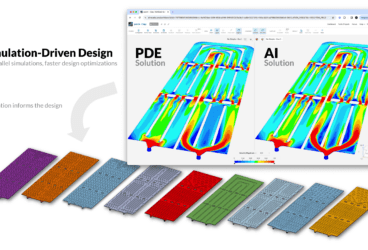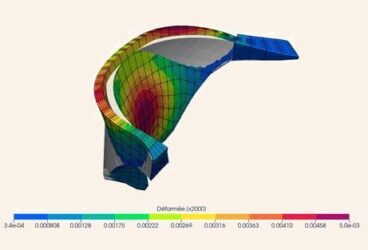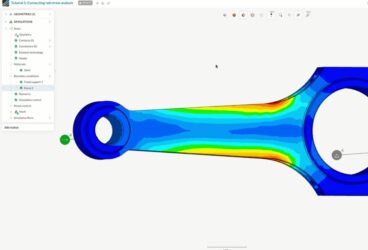“Is open-source software a reliable alternative to traditional proprietary engineering solutions?” That is a question many may ask themselves. Open source is a concept as old as the software industry itself. The first open-source software applications came into existence at the same time as computer machines, in the form of the basic codes that came together with them. These developments took place in the academic world, where the basic operating principles were that of collaboration and sharing.
Open Source Vs. Proprietary A Historical Debate in Developers' Communities
In the 80s, people with a more commercial outlook began to foresee the potential in using individual licensing agreements for software applications, without granting open access to the software code. For such proprietary software, original authors have the exclusive property rights to the source code. This makes them the only ones legally allowed to copy or modify it—so the person, team, or organization who created the code maintains full control over it.
The free developers’ community continued to promote their open-source philosophy as a set of values known as „the open-source way” [1]. Any open-source initiative, project or product is meant to be created in the spirit of collaborative participation, free exchange, transparency, rapid prototyping, meritocracy, and community support. From the early days of the software industry, heated debates were generated between the two communities, with commercial reasons on one side, and ethical disputes on code copyrights on the other.
Open Source Vs. Proprietary What is the Difference Between Proprietary and Open-Source CAE Software?
From a licensing perspective, the main differences are related to the cost and the conditions of using the software. Being primarily commercial, the majority of engineering software applications are proprietary. They are built with hidden source code and offered in a perpetual licensing system. Users must agree to licensing conditions—esentially consenting not to do anything with the software that the authors have not explicitly permitted.
For open-source software, the copyright belongs to the author, or a third party (for instance, software like OpenFOAM for CAE). Here, the vendor only plays the role of the distributor. A variety of open-source CAE software licenses is available for users, providing considerably more freedom and flexibility, and these are offered by the author within the license agreement. The Open Source Initiative [2] better explains these freedoms and the criteria open-source software must comply with:
- The license shall not restrict any party from selling or giving away the software
- The program must include source code and must allow distribution of source code, as well as a compiled form
- The license must explicitly permit the distribution of software built from modified source code (it may require derived works to carry a different name or version number)
- The license must be technology-neutral
- The license must not restrict other software
- The license must not be specific to a product
- No discrimination against fields of endeavor
- No discrimination against persons or groups
- The license must allow modifications and derived works
- The rights apply to all to whom the program is redistributed without an additional license by those parties
Open Source Benefits of Open-Source Software
The freedom to run the software for any purpose, on any number of machines, can significantly reduce costs, which is usually what drives a company’s decision to adopt open-source software. A lower Total Cost of Ownership (TCO) is considered to be one of the most important advantages of open-source solutions. Accurately estimating the TCO is not always simple, since the costs that need to be taken into account include (but are not limited to) various expenditures associated with administration, licensing, hardware and software updates, training and development, maintenance, technical support, and more. However, a TCO analysis often serves as the main planning and decision-making tool—and opting for proprietary software tends to increase costs across all dimensions.
Main Barriers to Using Proprietary Software
- It is developed for a single purpose, applications are separately packaged;
- Licenses and maintenance are very expensive;
- Low level of customization and adaptability;
- You are dependent on the developer for all updates, support, and fixes;
- Security issues—loopholes are slower to be discovered and patched;
- Vendor support is conditional to maintenance subscription.
Most Important Open-Source Engineering Software Benefits
- It’s essentially free;
- It’s continually evolving and less prone to bugs;
- You are not locked into using a particular vendor’s system;
- You can adapt the software to fit your own business requirements;
- You get access to the support offered by technical community;
- Increased degree of modularity and scalability.
Features of Open Engineering Platforms
The differences between proprietary and open-source solutions, which we have discussed above, apply to engineering/CAE platforms as well. In addition to a lower TCO and other financial benefits, an engineering platform user should be aware of the many qualitative advantages that CAE platforms, built “the open-source way,” provide:
- Open exchange — free exchange of ideas creates an environment where people can learn from each other and contribute to the creation of new ideas.
- Collaboration — open participation enables co-creation and faster problem-solving. With an open CAE platform, engineers and designers with different specializations can share information within their community and collaborate with suppliers and manufacturers to come up with better products.
- Rapid prototyping — can generate rapid failures, but ultimately results in better solutions.
- Meritocracy — in open-source communities, the best ideas win and everyone has access to the same information.
- Community — people with the same principles bring together diverse ideas and share their work.
Why Isn’t Everyone using Open-Source Software?
Despite the many benefits mentioned above, there are a number of reasons why open-source software adoption has not been as widespread as proprietary alternatives. Since creating a commercial software that would generate revenue is not a requirement, the needs of the end user tend to be neglected in favor of developers’ preferences. As a result, there are several disadvantages of using purely open-source software:
- The software interface is much less “user-friendly,” and often difficult to use unless you have extensive coding experience (as is the case with OpenFOAM–learn more: Why OpenFOAM Users Should Try SimScale).
- When you run into problems, you only have the community of your fellow users to rely on for support, which they provide on a voluntary basis.
- One benefit of an open system is that many people are identifying and fixing the bugs; however, that also means that it will be vulnerable to users with malicious intentions.
So how can one take advantage of the benefits of open-source without compromising on convenience and security?
SimScale – A CAE Platform Based on Open-Source Solvers
One solution would be to try to take the best of both worlds. The SimScale simulation platform is based on cutting-edge open-source solver technology. It has a user-friendly interface, dedicated support, maintenance and data security measures. In the spirit of “the open-source way,” it provides a free Community account with full access to all its features. Additionally, its Professional Plan offers many perks of traditional proprietary software with much more flexible and affordable pricing plans.
By adopting the most popular and reliable open-source tools of the industry, SimScale is able to rapidly implement new technology and ensure full compatibility with third-party software tools. Behind the intuitive user interface, the following open-source solvers enable the powerful simulation functionalities of the platform:
OpenFOAM — is a free, open-source CFD software that was primarily developed by OpenCFD Ltd, and is distributed by OpenCFD Ltd and the OpenFOAM Foundation [3]. It has a large user base across most areas of engineering and science, from both commercial and academic organizations.
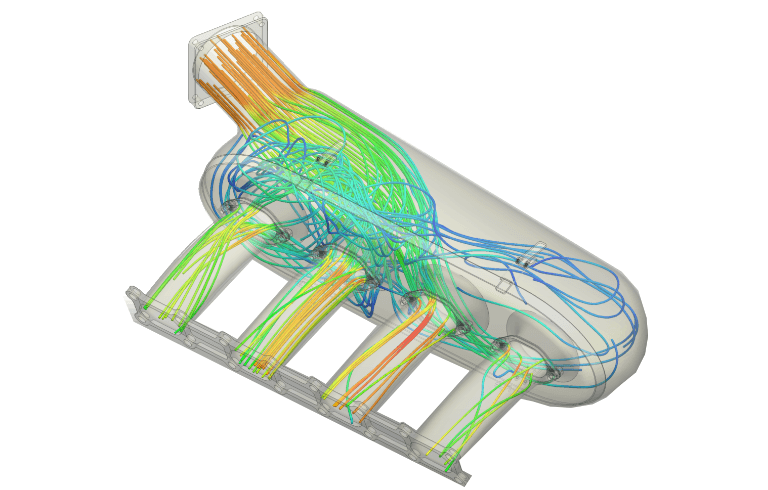
OpenFOAM has an extensive range of features that are capable of solving anything from complex fluid flows involving chemical reactions, turbulence, and heat transfer, to solid mechanics and electromagnetics. Many industry leaders—such as Airbus, BMW, Ford Motor, General Electric, Siemens, and Volkswagen—are using this toolbox for various applications.
Code_Aster — developed by EDF, Code_Aster offers a full range of multi-physics analysis and modeling methods that go well beyond the standard functions of a thermomechanical calculation code. These range from seismic analysis to porous media via acoustics, fatigue, stochastic dynamics, etc. Its modeling algorithms and solvers are constantly evolving and improving (1,200,000 lines of code, 200 operators)[4]. Code_Aster is used for various applications by industry-leading companies, including Airbus, Rolex, and Valeo.
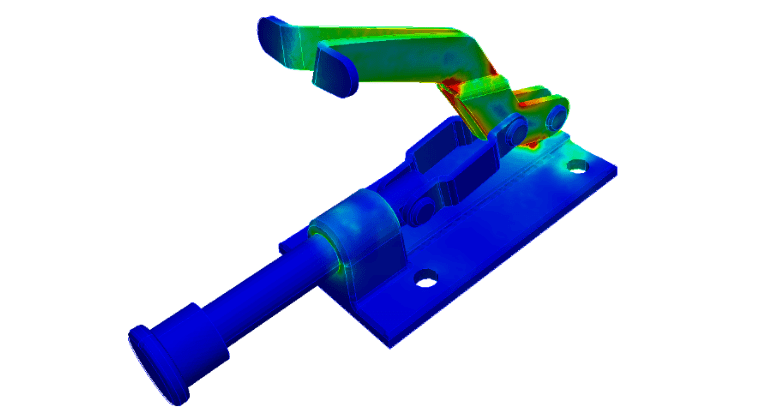
Other open-source solvers integrated on the SimScale platform:
CALCULIX — a package developed by a team from MTU Aero Engines as a tool to build, calculate, and post-process finite element models.
YADE — an extensible open-source framework for discrete numerical models, which enables virtual simulation of bulk material behavior within industrial applications.
MESHING ALGORITHMS — as the results of a simulation also depend on the mesh quality, the SimScale platform combines a large number of powerful meshing algorithms which allow users to quickly create accurate and robust computing grid.
Learn more about the cutting-edge open-source solver technology that the SimScale platform is based on, and browse our validation library with a large number of evaluated simulations of standard scientific cases.
Discover all the simulation features provided by SimScale. Download the document below.
References
- The Open Source Way, opensource.com
- What is open source?, opensource.com
- OpenFOAM the open source CFD toolbox, openfoam.com
- Code_Aster Analysis of Structures and Thermomechanics for Studies and Research, code-aster.org

